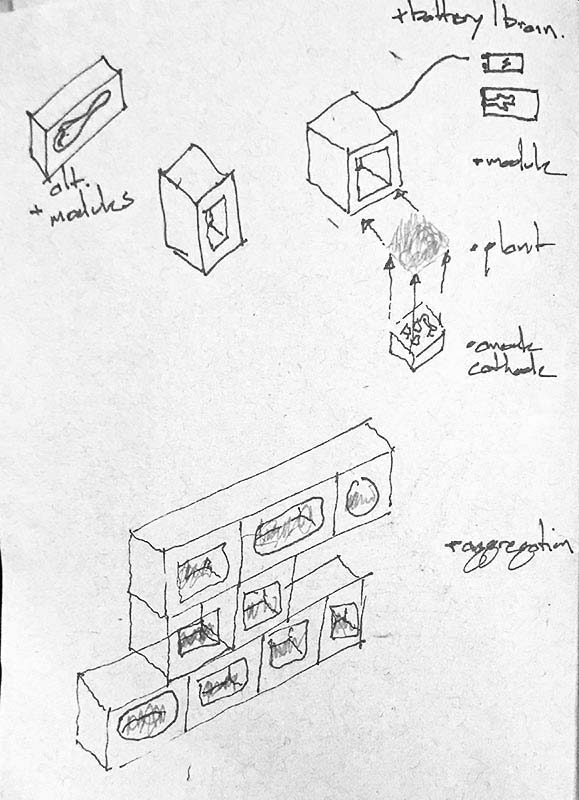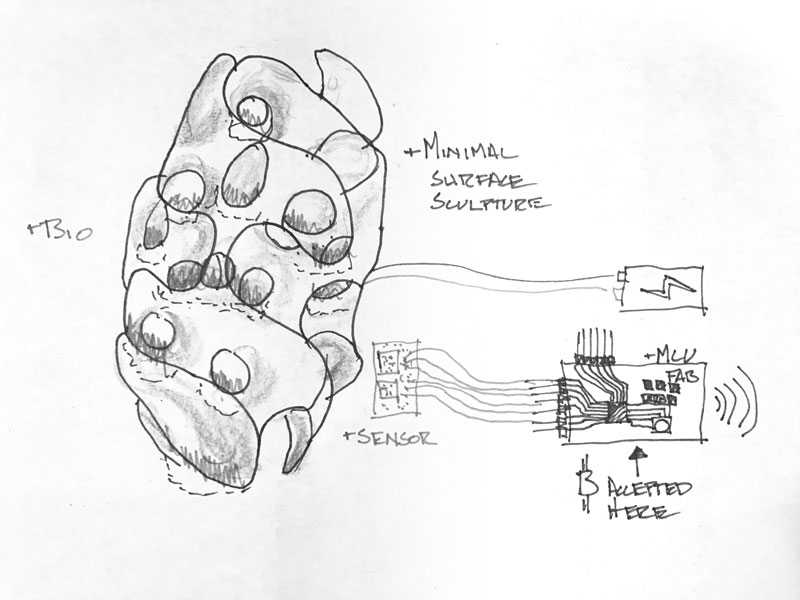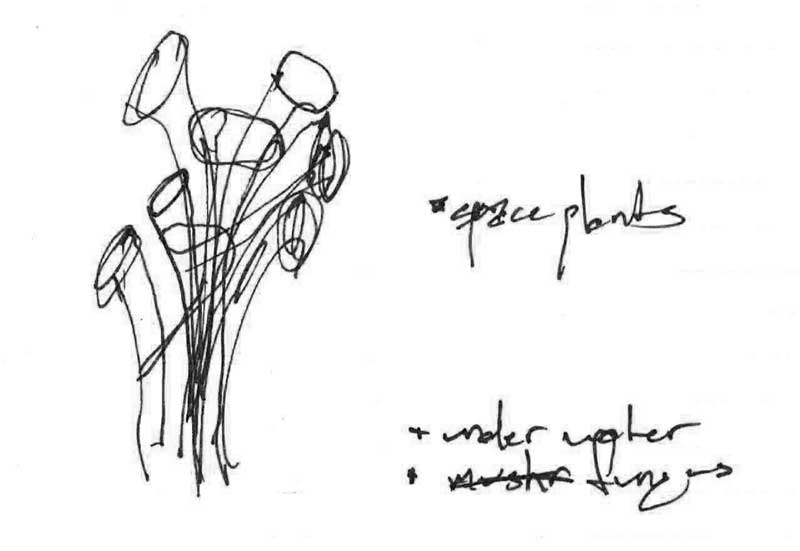Tags
Pure Imagination
- Environmental monitoring with online data logging to Thingsv
- Inventory
- Hessian/ burlap/ crocus composites
- CNC milled wood frame
- Grow monitors | What watches the watchers?
- Grow module | Design and fabrication
- Grow Module | The science
- Processing Light Graph
- Milling a composite mold
- Composites : Modular growth, testing
- Bio-electro-chemistry
- Bioelectrochemical testing pod
- LCD x Arduino
- Precedents
- Discussion
- Design, Materials and Methods
- History : Early concepts
2017 Feb 01
#pureImagination
2017.2.1
My ambition is to make an energy harvesting system using biological photovoltaics as an exhibition work to bring attention to clean, sensational possibilites for sourcing energy and the fact that we need [wildness] nature more than it needs humans. This system will be a network of modular components. Each module consists of a fabricated shell, preferrably from cradle-to-cradle capable materials, biological material (plant or algae, tbd), energy harvesting materials, bio-support materials. The network is connected to an energy storage and MCU. The MCU can be used for monitoring illuminance, humidity, temperature and volt output statistics to be used in optimization. Further, the energy harvested in the system may be used by the MCU to mine cryptocurrency, aka help build the block chain. It also will accept cryptocurrency donation so that it may spawn itself. While my design for the evergy harvesting and monitoring aspects of the system will be scaleable beyond what I produce for the academy, several modules will be fabricated into an eye-catching composition. I will update this page regularly as the project develops through 2017 June.
This first sketch is simply to illustrate the components and system. Many modules planters each with cathode and anode electrodes connected in series to a battery. The plants are charging the battery and also the battery can be discharged without disconnecting (wires) from the plant system.

Update: use aggregative, modular minimal surface geometries as structural surfaces capable of self-supporting, shading, retaining moisture and containing plants. Constructed from repeatable milled or lasercut (folded) molds with clay or concrete casts.

Update: make it look the part, alien. Repeatable deformed cones. Vertical infratructure would make the best use of space for this system of generating electricity (density).

Update: Considerations for how to utilize the energy harvested from the plants. In no particular order now.
- Random.org : Generate random numbers
- SETI@home : Communicate with aliens.
- Cryptocurrency : block-chain build slash accept donations.
Update: iterating on the vertical network idea. I think it would make an interesting project in terms of challenging fabrication, generative design, precision and connectivity. However, I am not convinced it is the best way to communicate my initial idea. Maybe this is something to revisit in the future.

Share this post...
Next post :: Antimony, introduction »
Antimony is an open-source, relying on graph composition where nodes represent primatives, 2d shapes, and loads of customizable operations and functions. The graph has an GUI akin to Grasshopper, the infamous Rhinoceros plugin. Antimony's interface includes a 3d viewport which has limited modeling capabilities that automatically log into the graph and a script editor. The script editor enables customization of all the graph nodes and is going to require more time for me to grasp. The advantage here is the algorithmic nature of the modeling. Changes can easily be applied throughout the entire history of the graph and propagate throughout...